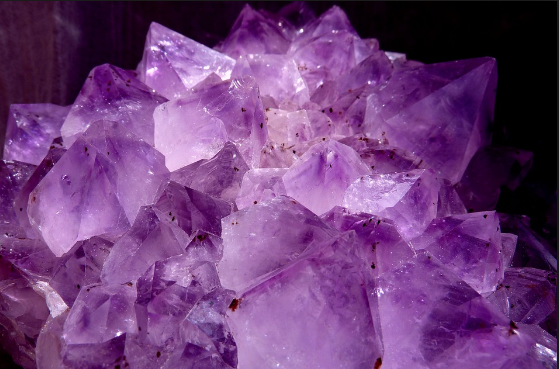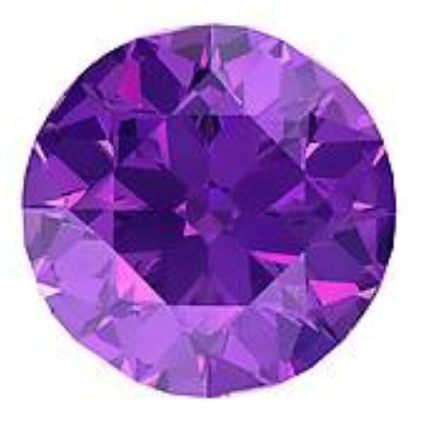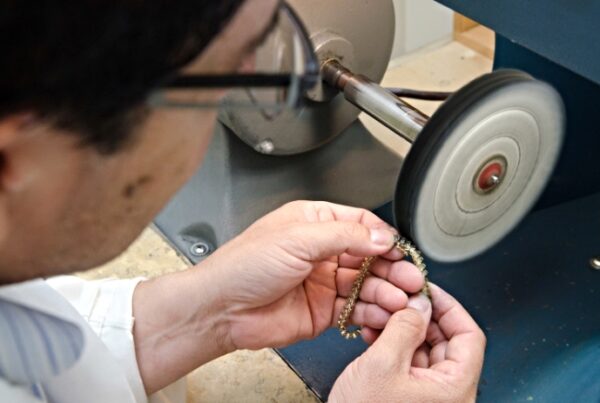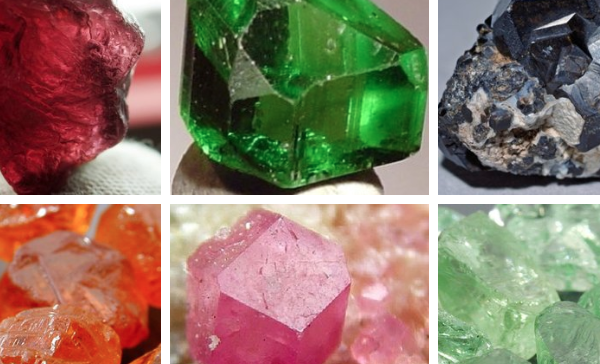Awesome Amethyst!
Amethyst is one of the most popular colored gemstones of all times. It is the birthstone for February, as well as the gemstone for 6th and 17th wedding anniversaries. Amethysts can be found in religious jewelry and royal jewel collections throughout the world, from those of ancient Egypt to the British crown jewels. Although once considered equal in value to ruby, emerald, and sapphire, relatively plentiful supplies now make this colorful gem widely available and highly affordable. Because of its beautiful shades of purple, durability, and the ability to be fashioned using a wide variety of cutting techniques, amethyst is extremely popular in mass market jewelry, as well as in custom design.
HISTORY
The word “amethyst” derives from the ancient Greek word “amethustos”, meaning sober or without drunkenness. Ancient Egyptians used amethyst for the zodiac sign of the goat. The goat was considered the enemy of vines and vineyards, and therefore the antidote of wine.
There are a number of Biblical references to the amethyst. The stone is considered a symbol of Saint Matthias and the Guardian Angel Adnachiel. It is also an emblem of the twelve apostles. Amethyst was one of the twelve precious stones in the high priest Aaron’s breastplate. The twelfth foundation of the Holy City was built of amethyst. Amethyst has stood for the tribe of Dan, one of the Twelve Tribes of Israel.
During the Middle Ages, amethyst was used as a symbol for piety and celibacy. It was worn by members of the Roman Catholic Church clergy and used to adorn church crosses. Amethyst is still known as the Bishop’s Stone. Roman Catholic bishops traditionally have their episcopal rings set with amethyst. Legend has it that St. Valentine wore a ring set with an amethyst carved with an image of Cupid.
In traditional Chinese medicine, amethyst is prescribed for stomach pains and bad dreams. Hundreds of years ago, amethyst stones were moistened with saliva and rubbed on the face to banish pimples and rough skin.
In medieval times, European soldiers wore amethyst amulets for protection in battle in the belief that amethysts heal people and keep them cool-headed. Amethyst beads have been found in English Anglo-Saxon graves.
LEGEND
There are two legends concerning the creation of amethyst.
Although attributed to Greek legend, one version may actually be from a poem written by the French poet Remy Belleau (1528–1577) titled “L’ Amethyste, ou les Amours de Bacchus et d’ Amethyste” (Amethyst, or the loves of Bacchus and Amethyste.) According to this version, Dionysus, the god of wine and intoxication, was pursuing a virgin maiden named Amethystos, who refused his affections. The maiden prayed to the gods begging to remain chaste. The goddess Artemis heard and answered her prayers by transforming Amethyst into a pure white stone. Humbled by the maiden’s desire to remain chaste, Dionysus poured wine over the stone as an offering, dyeing the crystal purple and creating the amethyst gem.
A second version is that after Dionysus had been insulted by a mortal, he vowed to reap vengeance on the next mortal to cross his path. This happened to be Amethystos, a maiden engaged in paying tribute to the goddess Artemis. To save her from Dionysus’ vengeance, Artemis quickly changed the maiden into a statue of pure white crystalline quartz. When Dionysus saw what had happened, he was overcome with grief. He wept tears of wine which flowed over the white quartz statue, dying it purple.
GEOGRAPHY
Amethyst was once as expensive as ruby, emerald, and sapphire until the 19th century, when Brazil’s large deposits were discovered. Enormous deposits of amethyst in South America and Africa now provide enough material to keep amethyst’s market price easily affordable.
The only commercially run amethyst mine in the United States is the Four Peaks Mine in Arizona. Amethyst arrowheads found in the area indicate that Native Americans were aware of this deposit. Some of the amethyst crystals brought back to Spain by Spanish explorers and fashioned into the Spanish crown jewels are believed to be from this area.
Other productive amethyst deposits are located in Canada, France, India, Madagascar, Mexico, Morocco, Myanmar, Namibia, Russia, South Africa, Sri Lanka, and Tanzania.
COLOR
Amethyst is an extremely popular gem because of its attractive purple color. While the word “amethyst” makes most people think of a dark purple gem, amethyst actually occurs in many shades of purple. The color can be so light that it is barely perceptible or so dark that it is nearly opaque. It can be reddish purple, purple, or violet-purple. Today much of the light-colored amethyst is used for mass-market jewelry. Premium colored reddish-purple amethyst is used in high end and designer jewelry.
The color of amethyst can be modified by heating. Heat treating can be used to lighten the color of extremely dark amethyst or eliminate brown tints. Much of the yellow to golden quartz sold as “citrine” is actually amethyst that has been heat treated. Natural or intentional heating can also change the color of amethyst to a pale green.
CUT
Amethyst can be fashioned into a wide variety shapes because it accepts many different cutting techniques. Common cuts include rounds, ovals, pears, emerald cuts, triangles, marquises, cushions, cabochons, and tumbled stones.
Amethyst is an exceptional material for cutting into freeform and unique shapes. These shapes can be done by hand or by automated cutting. These “fantasy” or designer cuts can be mass produced or created as one-of-a-kind pieces. Amethyst is also widely used for carving animal shapes and creating other objects for jewelry and ornamental use
CARE
Amethyst is the purple variety of quartz. It ranks 7 on the Mohs harness scale, making it suitable for daily wear. Although it is durable, some care is needed to maintain its polish and natural color. Amethyst can be damaged by accidental scrapes on hard objects or abrasion from other gems of equal or greater hardness in a jewelry box. It somewhat brittle material and can be chipped or scratched by sharp impact. It is best not to wear amethyst jewelry during rough activities or at locations where damage can occur.
Amethyst can be subject to fading by prolonged exposure to direct sunlight or bright display lights. For that reason, long-term storage of amethyst is best done in a jewelry box or other dark location.
SYNTHETIC AMETHYST
Even though amethyst is considered an affordable gem, cheaper synthetic amethyst has been manufactured since 1970. An enormous number of items have been produced from synthetic amethyst for faceted and cabochon jewelry. Synthetic amethyst is often sold undisclosed and passed off as natural amethyst. To be certain of purchasing authentic amethyst, it is important to make your purchase from a reputable jeweler.
FOLKLORE
For centuries, many mystical powers have been attributed to amethyst. In ancient times, it was believed to prevent drunkenness. Drinking from an amethyst cup was believed to protect against intoxication. Ancient Egyptians used amethyst as guard against guilty and fearful feelings. It has been worn as protection from self-deception, as well as a protection against witchcraft. In the Chinese philosophy of Feng Sui, amethyst is believed to enhance the wealth corner that brings about the giving and receiving of material wealth.
Amethyst is considered by some to be an aid for insomnia and to help with depression. When worn close to the head, amethyst is said to alleviate headaches. Some believe it can aid the thinking process by helping to process information more efficiently. Amethyst has also been used to aid people suffering from faulty memory.
VISIT US!
We invite you to view our extensive collection of colored gemstone jewelry. Whether you are looking for a gift for a loved one or a self-purchase, you will be sure to find something you love. Visit us at 11219 South Dixie Highway in the Pinecrest Village of Miami. We offer plenty of free parking. We are open Monday – Saturday, 10am to 6pm. Have a question? Just give us a call at (305) 252-1123. We look forward to serving you!




